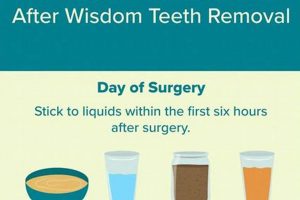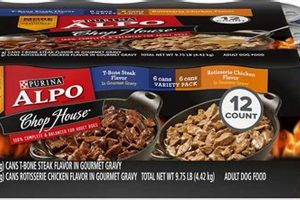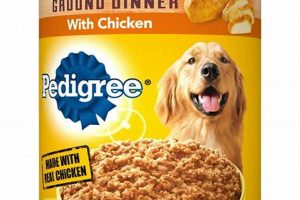The dietary requirements of hamsters and guinea pigs differ significantly. While both are small mammals, their nutritional needs vary, particularly in terms of vitamin C and fiber. Guinea pig food is often formulated with high levels of vitamin C, which guinea pigs require as they cannot synthesize it themselves. Hamsters, however, produce their own vitamin C and do not need the same level of supplementation. In addition, the fiber content and other nutrient ratios in guinea pig food may not be optimally balanced for a hamster’s digestive system.
Providing food designed for another species can lead to nutritional imbalances and health problems. Over-supplementation of certain vitamins or minerals can, in some cases, be detrimental. Similarly, an improper fiber content could lead to digestive upset or other complications. A balanced diet specifically formulated for hamsters is crucial to ensure their overall well-being and longevity. Providing a species-appropriate food helps maintain their digestive health, supports their immune system, and prevents nutritional deficiencies or toxicities.
Given the disparities in nutritional requirements, it is important to provide each animal with food tailored to its specific needs. The subsequent sections will delve deeper into the potential consequences of feeding hamsters food intended for guinea pigs, outlining the specific risks and recommending appropriate dietary choices for maintaining a healthy hamster.
Guidance Regarding Interspecies Food Provisioning
The following advice addresses concerns surrounding the dietary management of hamsters, specifically concerning the suitability of food formulated for guinea pigs.
Tip 1: Prioritize Species-Specific Nutrition: Hamsters require a diet explicitly formulated for their physiological needs. This ensures the correct balance of protein, carbohydrates, fats, vitamins, and minerals.
Tip 2: Avoid Vitamin C Overload: Guinea pig food is often fortified with high levels of vitamin C. Excessive intake in hamsters can potentially lead to health issues, as they synthesize their own vitamin C.
Tip 3: Analyze Ingredient Composition: Scrutinize the ingredient list of both hamster and guinea pig food. Pay close attention to fiber content, protein sources, and the inclusion of supplemental vitamins and minerals. Significant disparities should raise concerns.
Tip 4: Observe for Digestive Distress: If a hamster ingests guinea pig food, monitor closely for signs of digestive upset, such as diarrhea, constipation, or a change in appetite. Consult a veterinarian if any adverse reactions are noted.
Tip 5: Understand Fiber Content: The fiber requirements of hamsters differ from those of guinea pigs. Ensure the hamster’s diet contains the appropriate fiber level to promote healthy digestion and prevent gastrointestinal issues.
Tip 6: Research Reputable Hamster Food Brands: Investigate and select reputable brands that offer high-quality hamster food. Look for foods that are complete and balanced, meeting the hamster’s specific nutritional needs.
Tip 7: Consult with a Veterinarian: When in doubt, seek guidance from a veterinarian specializing in small animal care. A veterinarian can provide personalized recommendations for a hamster’s dietary needs.
Adhering to these guidelines will contribute to ensuring that hamsters receive the correct nutrition, promoting their overall health and well-being. Proper dietary management is crucial for preventing nutritional imbalances and potential health complications.
The following sections will delve into the alternative food for hamsters.
1. Nutritional Disparity
Nutritional disparity arises when the dietary requirements of two different species are not adequately met by a single food source. This is a crucial consideration when evaluating whether hamsters can consume food formulated for guinea pigs. The fundamental differences in their physiological needs dictate that they require tailored diets to maintain optimal health.
- Vitamin C Requirements
Guinea pigs lack the ability to synthesize vitamin C, making dietary supplementation essential. Guinea pig food is, therefore, fortified with significant amounts of this vitamin. Hamsters, conversely, produce their own vitamin C. Excessive vitamin C intake from guinea pig food could potentially lead to health complications in hamsters due to over-supplementation and potential imbalances in other nutrient absorption.
- Fiber Content Differences
Hamsters and guinea pigs have different fiber requirements for proper digestion. Guinea pig food often contains higher fiber levels to support their hindgut fermentation process. Hamsters, with their different digestive systems, may not efficiently process this higher fiber content, potentially leading to digestive upset, such as diarrhea or bloating. An inappropriate fiber-to-nutrient ratio can hinder nutrient absorption and overall digestive health in hamsters.
- Protein and Fat Ratios
The optimal ratios of protein and fat in a diet vary between species. Guinea pig food may have protein and fat levels that are not ideally suited for hamsters. An imbalance in these macronutrients can impact energy levels, growth, and overall body condition in hamsters. Long-term consumption of guinea pig food could lead to either protein deficiency or excessive fat intake, resulting in weight management issues or metabolic imbalances.
- Mineral Composition
The mineral composition of guinea pig food is formulated to meet the specific needs of guinea pigs, and the levels of certain minerals may not be appropriate for hamsters. For instance, the calcium-to-phosphorus ratio might differ, potentially affecting bone health and mineral absorption in hamsters. Imbalances in mineral intake can lead to long-term health problems.
The facets of nutritional disparity highlight why hamsters should not consume guinea pig food. The differences in vitamin C requirements, fiber content, protein and fat ratios, and mineral composition create a significant risk of nutritional imbalances and potential health problems. A diet specifically formulated for hamsters is essential to ensure they receive the proper nutrients in the correct proportions, supporting their overall well-being and preventing potential health complications.
2. Vitamin C Overload
The potential for vitamin C overload is a critical consideration when evaluating whether hamsters can consume guinea pig food. Guinea pigs, unlike hamsters, require a dietary source of vitamin C because they cannot synthesize it themselves. Consequently, guinea pig food is often fortified with high levels of this vitamin. Hamsters, however, produce their own vitamin C internally. The consumption of guinea pig food by hamsters, therefore, introduces the risk of ingesting excessive amounts of vitamin C. This can disrupt the hamster’s natural vitamin balance and potentially lead to adverse health effects. The degree of severity depends on the amount of guinea pig food consumed and the hamster’s individual sensitivity.
Although vitamin C is generally considered water-soluble and excess amounts are typically excreted, chronic overconsumption can place undue stress on the kidneys. In rare cases, it could also interfere with the absorption of other essential nutrients. While documented cases of severe vitamin C toxicity in hamsters due to guinea pig food consumption are limited, the potential for long-term subclinical effects remains a concern. Regular consumption of a diet significantly exceeding the hamster’s physiological needs for any nutrient, including vitamin C, can contribute to various health issues over time. Monitoring the animal’s overall health and promptly addressing any signs of discomfort or changes in behavior are essential in such situations.
In summary, the risk of vitamin C overload is a compelling argument against feeding hamsters guinea pig food. While the acute effects might be minimal, the potential for long-term health complications associated with chronic over-supplementation warrants caution. Providing a diet specifically formulated to meet the hamster’s unique nutritional requirements remains the safest and most appropriate course of action. This ensures that the animal receives the necessary nutrients in the correct proportions, minimizing the risk of adverse health outcomes associated with dietary imbalances.
3. Fiber Imbalance
Fiber imbalance constitutes a significant concern when evaluating the suitability of guinea pig food for hamsters. The digestive physiology of hamsters differs substantially from that of guinea pigs, impacting their respective fiber requirements. Guinea pig food formulations typically incorporate a higher fiber content to support hindgut fermentation, a digestive process crucial for guinea pigs but less relevant to hamsters. Consequently, a hamster consuming guinea pig food is likely to experience a fiber imbalance, potentially leading to digestive disturbances. For instance, an excess of fiber can result in digestive upset, manifested as diarrhea or bloating, while insufficient fiber intake can contribute to constipation or other gastrointestinal irregularities. The optimal fiber concentration in a hamster’s diet promotes healthy bowel function and nutrient absorption, whereas an imbalance disrupts these processes, affecting overall health and well-being.
The practical consequences of fiber imbalance extend beyond immediate digestive discomfort. Chronic fiber imbalance can interfere with nutrient absorption, potentially leading to deficiencies in essential vitamins and minerals. A hamster’s digestive system is adapted to efficiently process a specific fiber-to-nutrient ratio; an excess of fiber can reduce the bioavailability of other nutrients, while a deficiency can impair digestive motility and overall gut health. For example, a hamster consuming excessive fiber from guinea pig food might experience reduced absorption of essential minerals like calcium or zinc, impacting bone health and immune function. In contrast, insufficient fiber intake can lead to reduced fecal bulk and slower transit times, potentially increasing the risk of impaction or other digestive complications.
In conclusion, fiber imbalance represents a pivotal consideration regarding the dietary management of hamsters. The disparity in fiber requirements between hamsters and guinea pigs renders guinea pig food unsuitable for hamsters due to the high risk of digestive disturbances and impaired nutrient absorption. Maintaining an appropriate fiber balance in a hamster’s diet is essential for promoting healthy digestion, preventing gastrointestinal complications, and ensuring optimal nutrient utilization. Selecting a hamster-specific food formulation that meets their unique fiber needs is therefore crucial for supporting their overall health and well-being. Further research and informed decision-making are necessary to prevent fiber-related issues and ensure hamsters receive a nutritionally balanced diet.
4. Ingredient Suitability
Ingredient suitability is a critical factor determining whether hamsters can safely consume guinea pig food. The digestive systems and metabolic requirements of these two species differ significantly, necessitating distinct dietary compositions. Guinea pig food is formulated to meet the nutritional needs of guinea pigs, considering their requirement for high fiber and vitamin C supplementation, which hamsters do not generally need. Ingredient suitability thus becomes a direct cause-and-effect relationship: inappropriate ingredients can lead to digestive upset, nutritional imbalances, and potential health problems in hamsters. For example, guinea pig food may contain higher levels of alfalfa or other fibrous ingredients that, while beneficial for guinea pigs, could cause digestive distress in hamsters due to their relatively simpler digestive tracts.
The importance of ingredient suitability also extends to specific additives or preservatives present in guinea pig food. Certain ingredients, while harmless to guinea pigs, could be detrimental to hamsters. For instance, some formulations might include high sugar content or molasses to enhance palatability, which can contribute to obesity or dental problems in hamsters. Furthermore, the protein sources and fat content in guinea pig food may not align with the hamster’s metabolic needs, potentially resulting in either protein deficiency or excessive fat intake. Real-life examples include hamsters experiencing diarrhea, weight gain, or skin issues after being fed guinea pig food regularly, demonstrating the direct impact of unsuitable ingredients.
In conclusion, understanding the concept of ingredient suitability is practically significant in determining whether hamsters can consume guinea pig food. The potential risks associated with inappropriate ingredients, ranging from digestive upset to nutritional imbalances and long-term health issues, underscore the importance of providing species-specific nutrition. Challenges arise when pet owners assume that because both animals are small and herbivorous, their dietary needs are similar. However, careful consideration of ingredient lists and a thorough understanding of each species’ unique nutritional requirements are essential. Prioritizing ingredient suitability through species-specific food choices is key to ensuring the health and well-being of hamsters.
5. Potential Harm
The consideration of potential harm is paramount when assessing whether hamsters can consume guinea pig food. Differences in nutritional requirements and digestive physiology between these species create a significant risk of adverse health outcomes if hamsters are fed guinea pig food regularly. The potential harm encompasses a range of issues from mild digestive upset to severe nutritional imbalances and long-term health complications.
- Digestive Disturbances
Hamsters possess a relatively simple digestive system compared to guinea pigs. Guinea pig food often contains higher fiber levels designed to support hindgut fermentation. When hamsters consume this high-fiber diet, they may experience diarrhea, bloating, or other forms of digestive discomfort. Chronic digestive disturbances can hinder nutrient absorption and compromise overall health. Real-life examples include hamsters exhibiting loose stools, reduced appetite, and weight loss after being fed guinea pig food consistently.
- Nutritional Imbalances
Guinea pig food formulations are tailored to meet the specific needs of guinea pigs, including high levels of vitamin C and certain minerals. Hamsters, on the other hand, produce their own vitamin C and require different mineral ratios. Consuming guinea pig food can lead to over-supplementation of certain nutrients and deficiencies in others, disrupting the hamster’s metabolic balance. Potential consequences include kidney strain due to excessive vitamin C, impaired bone health due to mineral imbalances, and compromised immune function due to overall nutritional deficiencies.
- Metabolic Stress
The metabolic demands of hamsters differ from those of guinea pigs. Guinea pig food may contain protein and fat levels that are not optimal for hamsters. An imbalance in macronutrients can place undue stress on the hamster’s metabolic processes, leading to weight gain, liver problems, or other metabolic disorders. Hamsters fed guinea pig food may develop obesity due to the high-calorie content or experience liver damage due to the improper processing of fats. These metabolic stresses can significantly impact the hamster’s lifespan and quality of life.
- Allergic Reactions and Toxicity
While less common, the potential for allergic reactions or toxicity should not be overlooked. Guinea pig food might contain ingredients or additives that are harmless to guinea pigs but elicit allergic responses or toxic effects in hamsters. Symptoms can range from skin irritation and respiratory distress to more severe systemic reactions. For instance, certain preservatives or artificial colorings present in guinea pig food could trigger allergic reactions in sensitive hamsters. Regular monitoring for any adverse reactions is critical when introducing new foods into a hamster’s diet.
In summation, the facets of potential harm underscore the unsuitability of guinea pig food for hamsters. Digestive disturbances, nutritional imbalances, metabolic stress, and the risk of allergic reactions or toxicity collectively contribute to a significantly increased risk of adverse health outcomes. Therefore, it is crucial to provide hamsters with a diet specifically formulated to meet their unique nutritional needs, minimizing the potential for harm and supporting their long-term health and well-being. The practice of feeding guinea pig food to hamsters should be avoided.
Frequently Asked Questions
This section addresses common inquiries regarding the suitability of guinea pig food for hamsters, providing clear and concise answers based on established nutritional guidelines.
Question 1: Is guinea pig food a suitable substitute for hamster food?
No, guinea pig food is not a suitable substitute for hamster food. The nutritional requirements of hamsters and guinea pigs differ significantly, and guinea pig food lacks the specific nutrients required for optimal hamster health.
Question 2: What are the primary risks associated with feeding guinea pig food to hamsters?
The primary risks include digestive upset, nutritional imbalances, potential vitamin C overload, and the ingestion of inappropriate fiber levels, all of which can compromise a hamster’s health.
Question 3: Does guinea pig food provide the correct balance of vitamins and minerals for hamsters?
No, guinea pig food does not provide the correct balance of vitamins and minerals for hamsters. It often contains excessive levels of vitamin C and insufficient levels of other essential nutrients.
Question 4: Can hamsters develop health problems if they consistently consume guinea pig food?
Yes, hamsters can develop health problems from consistently consuming guinea pig food. These problems may include digestive disorders, weight gain, kidney strain, and reduced immune function.
Question 5: If a hamster accidentally consumes a small amount of guinea pig food, is it a cause for concern?
While a small amount of accidental ingestion is unlikely to cause immediate harm, it is advisable to monitor the hamster for any signs of digestive upset. Consistent consumption should be avoided.
Question 6: What should be the primary components of a hamster’s diet to ensure optimal health?
A hamster’s diet should primarily consist of a high-quality hamster food formulated to meet their specific nutritional needs, supplemented with small amounts of fresh vegetables and occasional treats in moderation.
In summary, it is imperative to provide hamsters with food designed specifically for their dietary needs. Guinea pig food poses potential health risks and should not be considered a suitable alternative.
The following section will provide information on the recommended food and diet for hamsters.
Can Hamsters Eat Guinea Pig Food
This article has explored the question of whether hamsters can eat guinea pig food, analyzing the disparities in nutritional requirements between the two species. It has demonstrated that guinea pig food formulations are unsuitable for hamsters due to imbalances in vitamin C levels, fiber content, and overall macronutrient ratios. The potential for digestive upset, nutritional deficiencies, and long-term health problems associated with this practice has been clearly established.
Given the distinct dietary needs of hamsters, providing species-specific nutrition is essential for their well-being. Pet owners are strongly encouraged to select hamster-specific food and supplements, consulting with a veterinarian when necessary. Prioritizing informed decisions regarding nutrition ensures optimal health and longevity for these small companion animals. The health of your pets is your responsible.







![Can *You* Freeze Dry Dog Food at Home? [Guide] World’s Most Delicious Foods: Must-Try Dishes from Every Country Can *You* Freeze Dry Dog Food at Home? [Guide] | World’s Most Delicious Foods: Must-Try Dishes from Every Country](https://lisasfoods.com/wp-content/uploads/2025/12/th-833-300x200.jpg)